Every so often, in the two year course of this blog, I do an update of one post or another—usually months apart. Well, three weeks ago, I posted a Quilt Story about the portrait of my sister Heidi, “California Dreams.” In it I wrote:
“I totally surprised myself when I found [some of] the original sketches I had made. No doubt, somewhere in a box, there may be other sketches, original photos, possibly work-in-progress photos, but if and when I ever come across them is anyone’s guess.”
Guess what? A set of slides were sitting about 8 feet away from me and my computer, just waiting for me to realize what they were.
As it happened, about 36 hours after the blog posted, I was cleaning up my worktable, putting things away that had accumulated the last few months. One pile had been removed from an old bin and needed to find a new home—old camera parts, photos and slides that I had already gone through. But I had also tossed a stray slide carousel (remember those?) box onto the pile along the way. But this time, I opened the box and pulled out a few slides just to see what they were. To borrow a term from Aussie students of mine, I was gobsmacked. They were in-progress shots of “California Dreams”—from original concept sketches to choosing the border and making the backing, the whole process documented. The Universe had heard my comment.
Since I hadn’t had any in-progress shots in the original post, I gave Tom the slides to scan so we could do an update right away. Shortly after he started he called me into his office.
“Do you really want to use these?” he asked.
For some reason the slides had yellowed over time. I’m not talking a little yellowish cast. They resemble old-fashioned sepia-toned photos. Maybe they got too hot in storage at some point or maybe it’s just age. After all, the quilt was made in 1991, though other slides from that era have fared better.
Tom did what he could with digitally adjusting them, and I decided it was still worthwhile to proceed with the update. The slides complete the Quilt Story and despite not being accurate in color they still show the process that you, my readers, can follow. It’s a little bit of sepia-toned history.

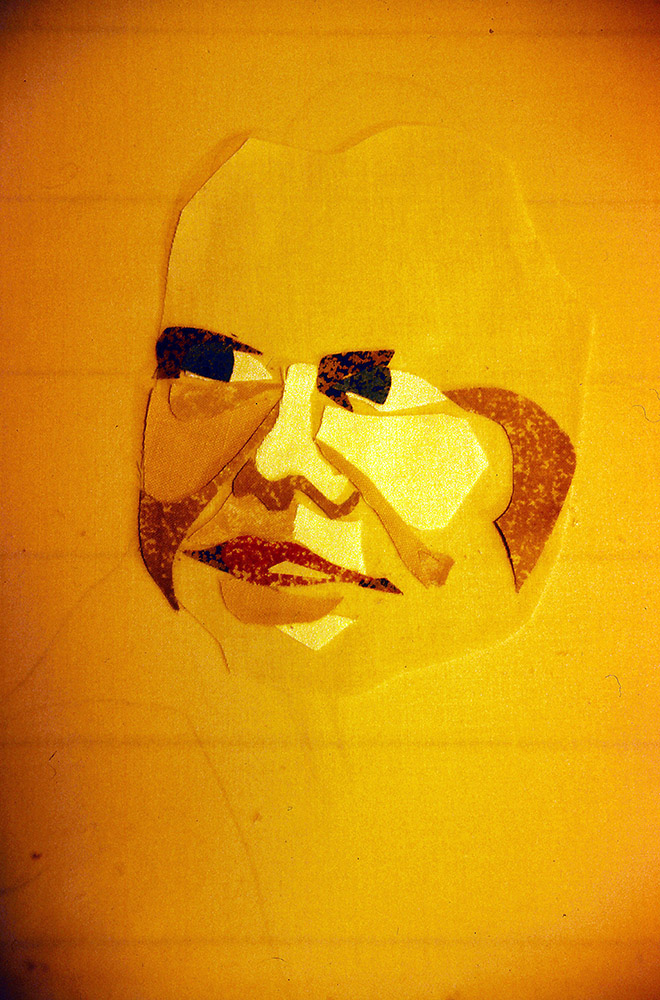
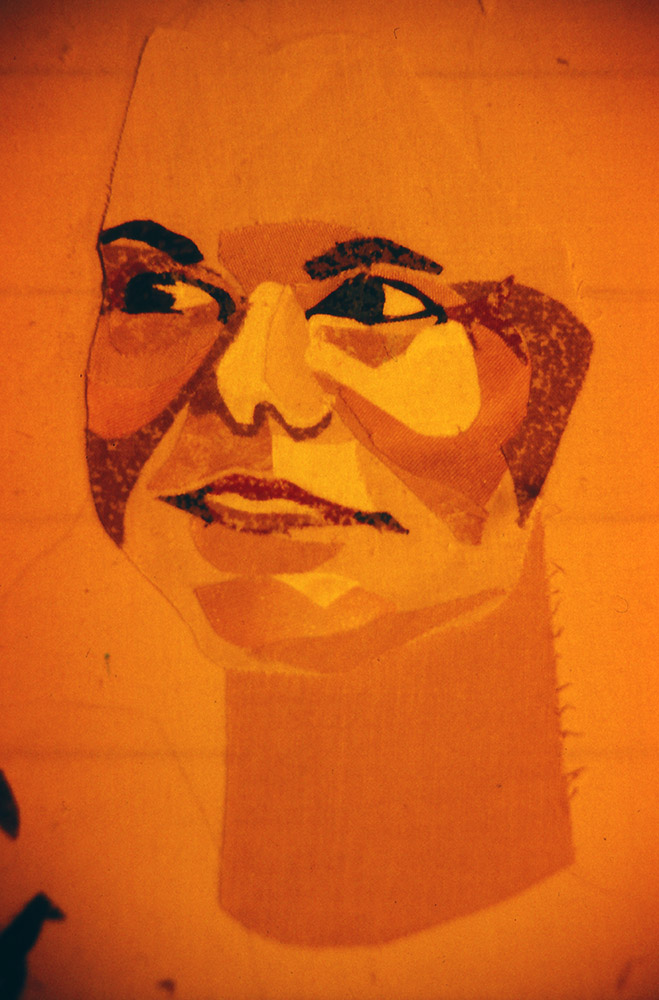
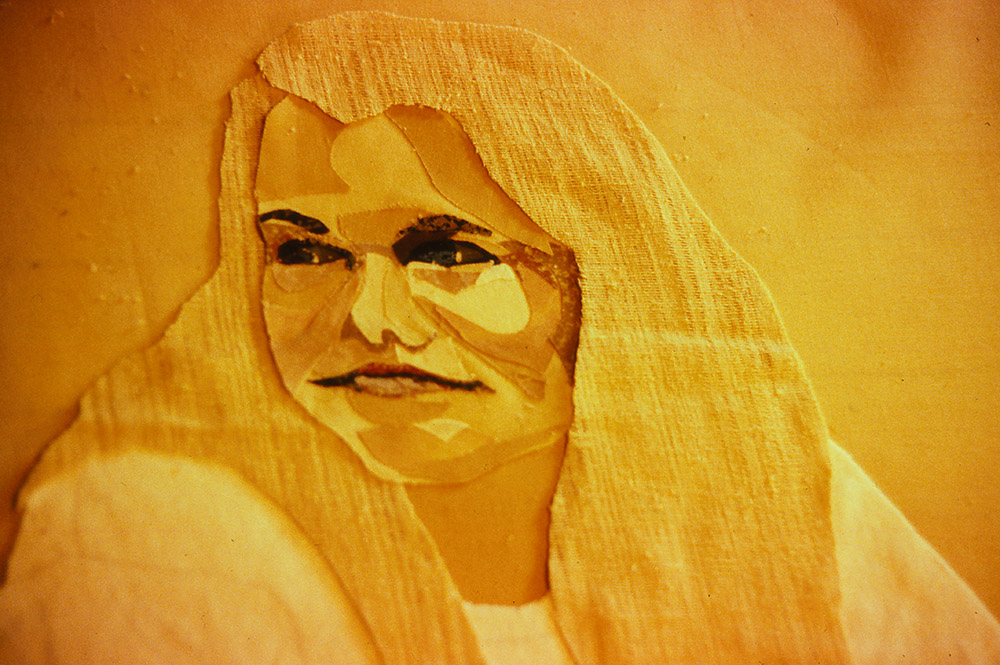
Here, I would like to make an important point: If you’re thinking to yourself, “hmmm, I didn’t think Susan worked this way with such large pieces of fabric to block in shapes,” well, I don’t anymore—not for a long time. But this is history we’re talking about, and it’s where I started.
However, then as now, I free-hand cut my fabrics, keeping the original photos handy for reference, but not using templates.
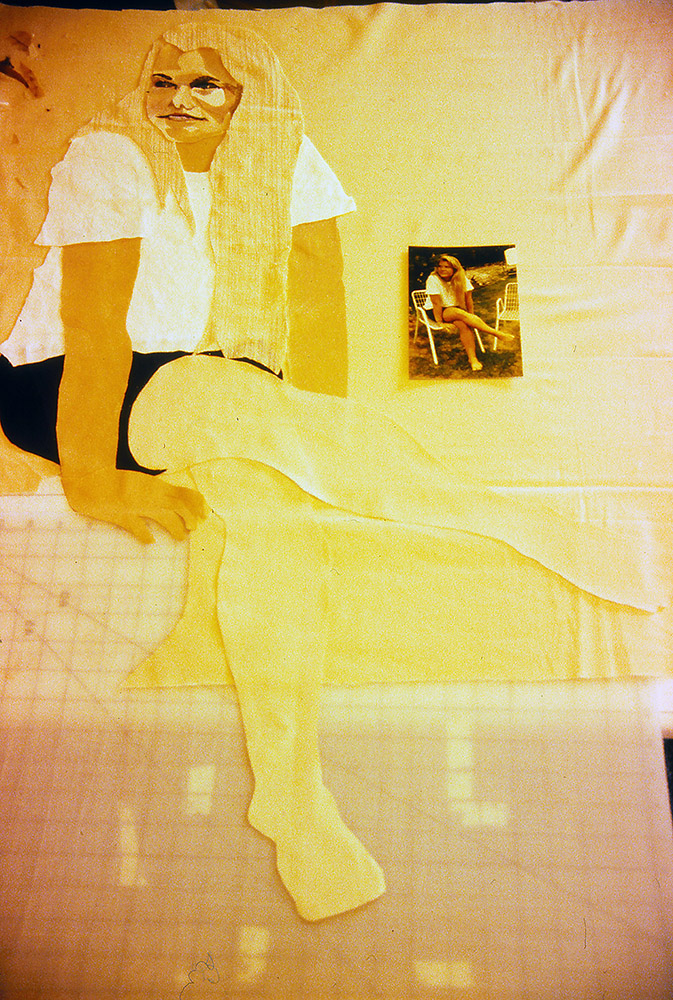
Nowadays, instead of blocking in those big shapes with single pieces of fabric, I use smaller pieces of (printed) fabric of different colors and values to build form. Trial and error has taught me that it’s actually easier that way.
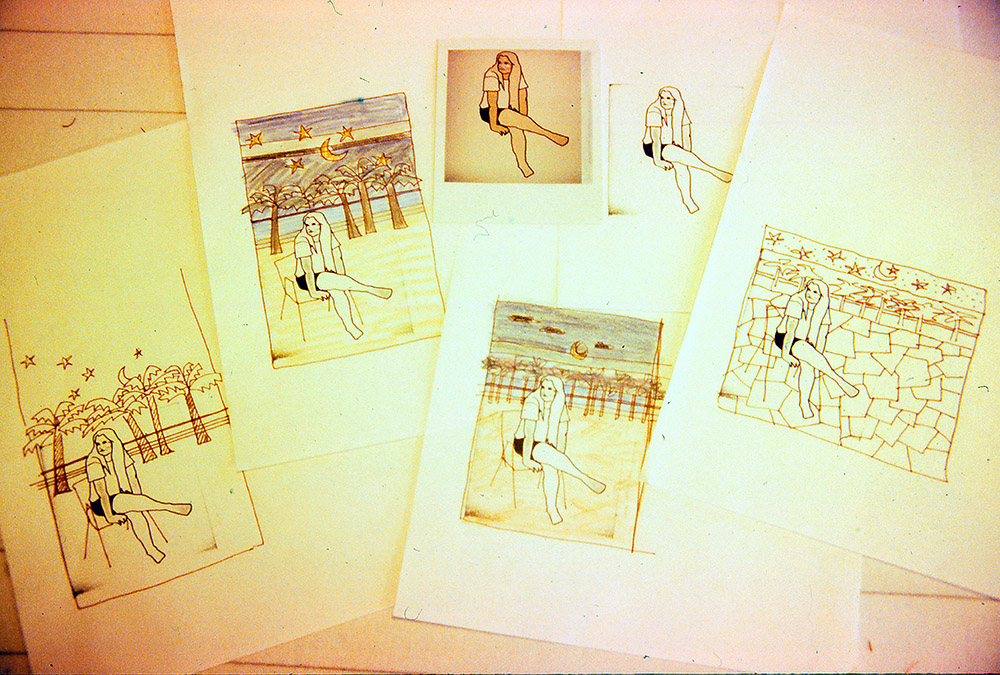
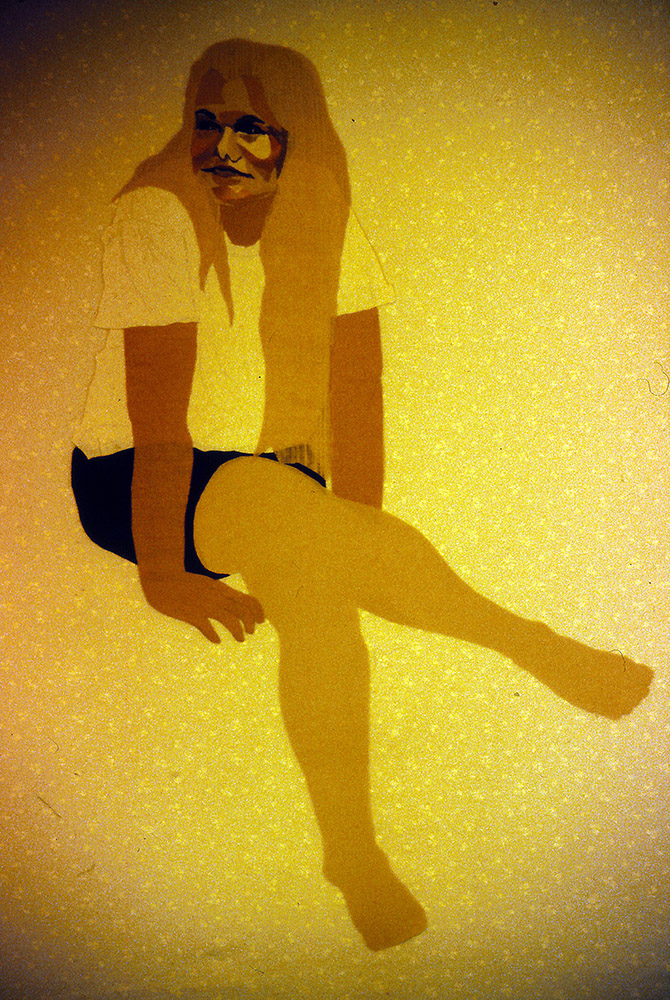
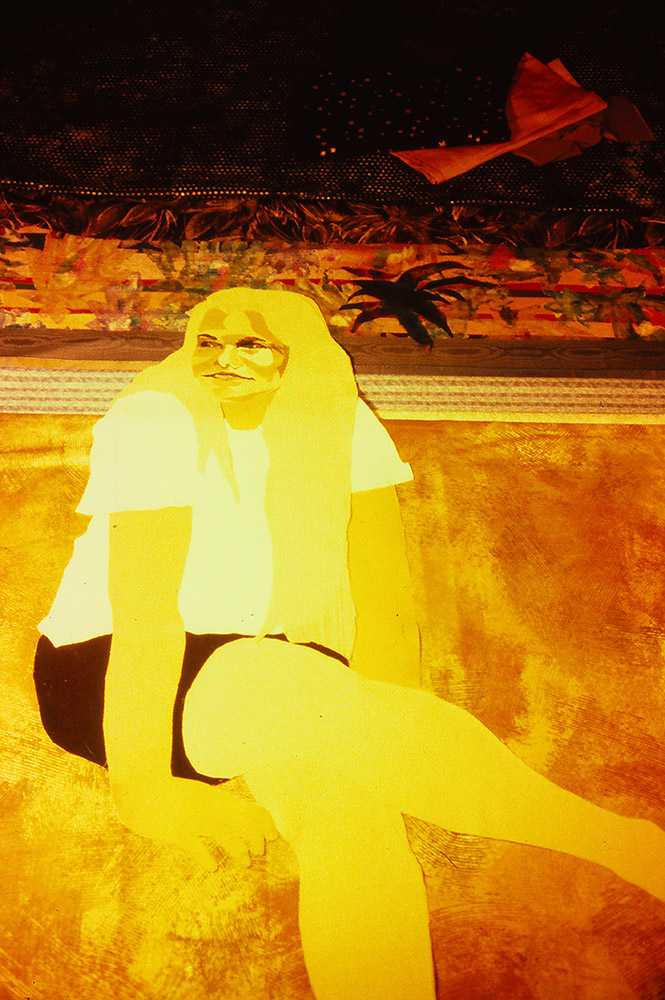
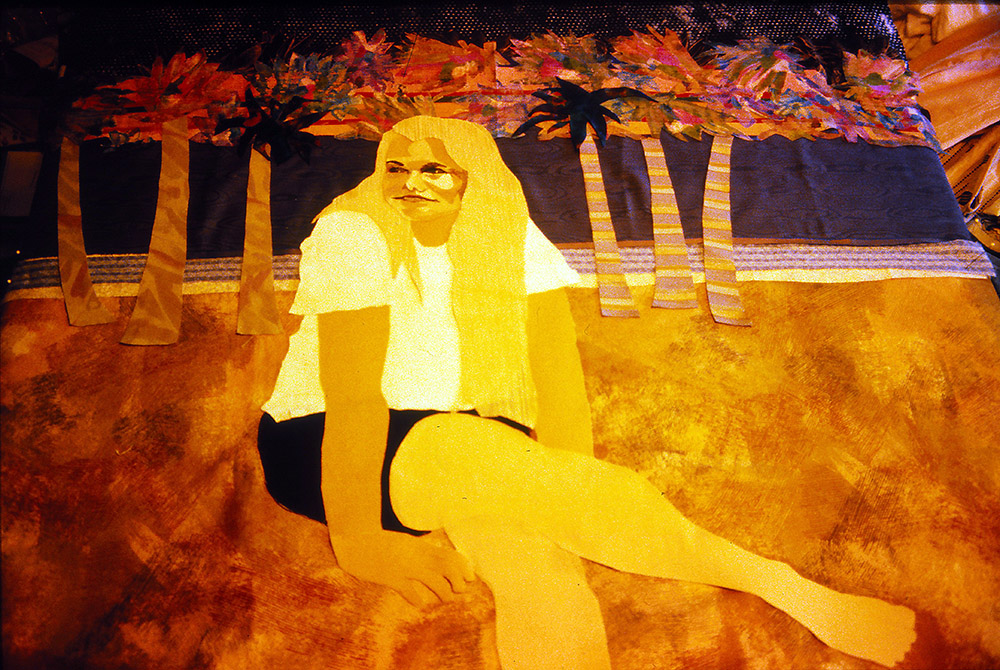

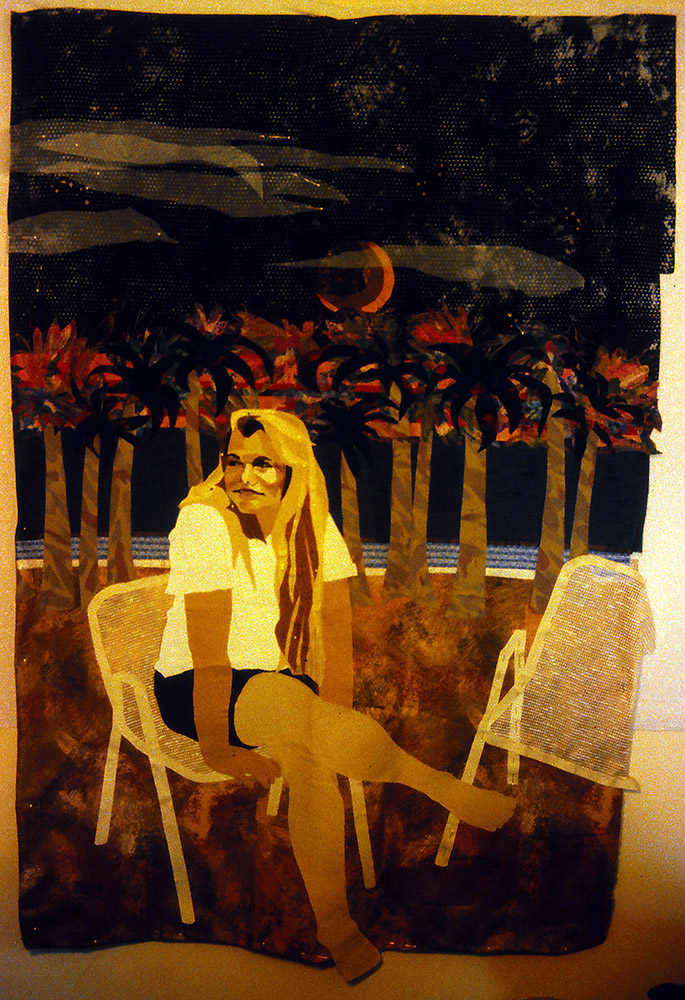
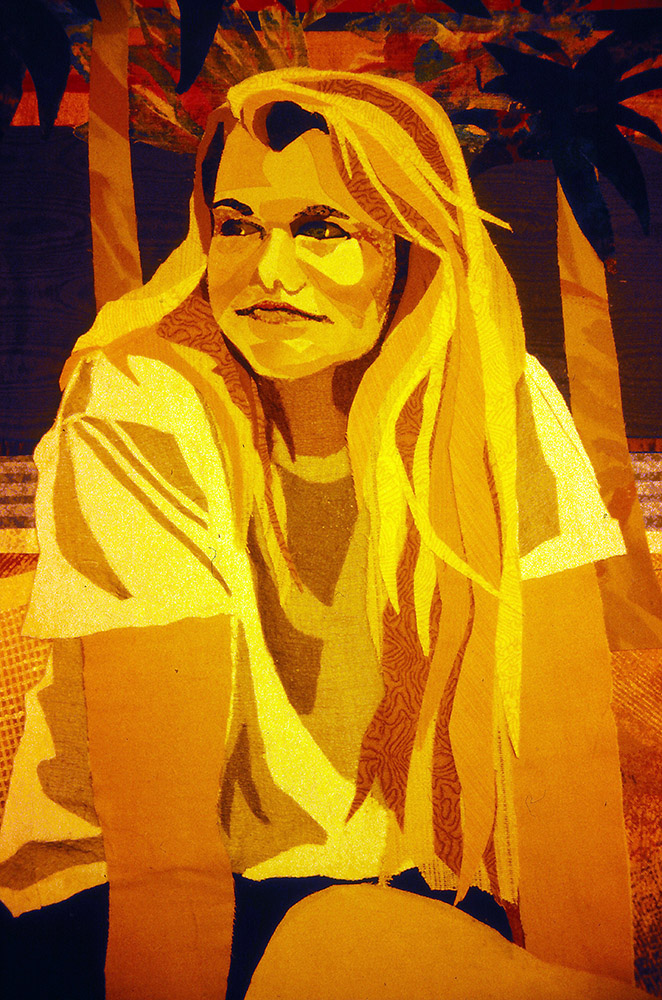
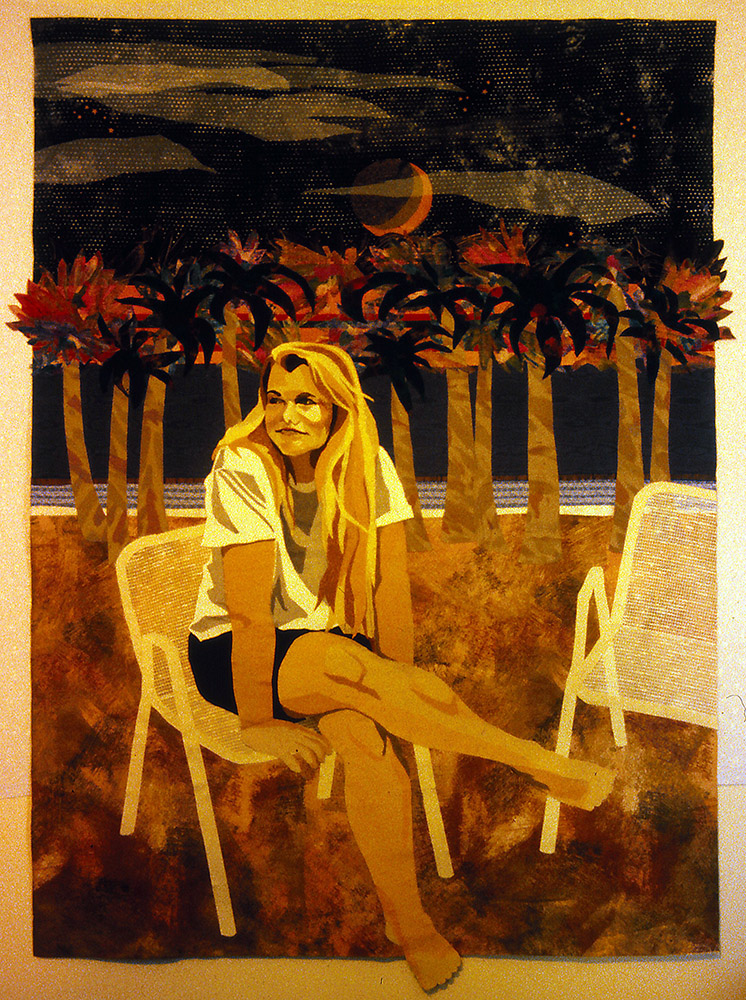
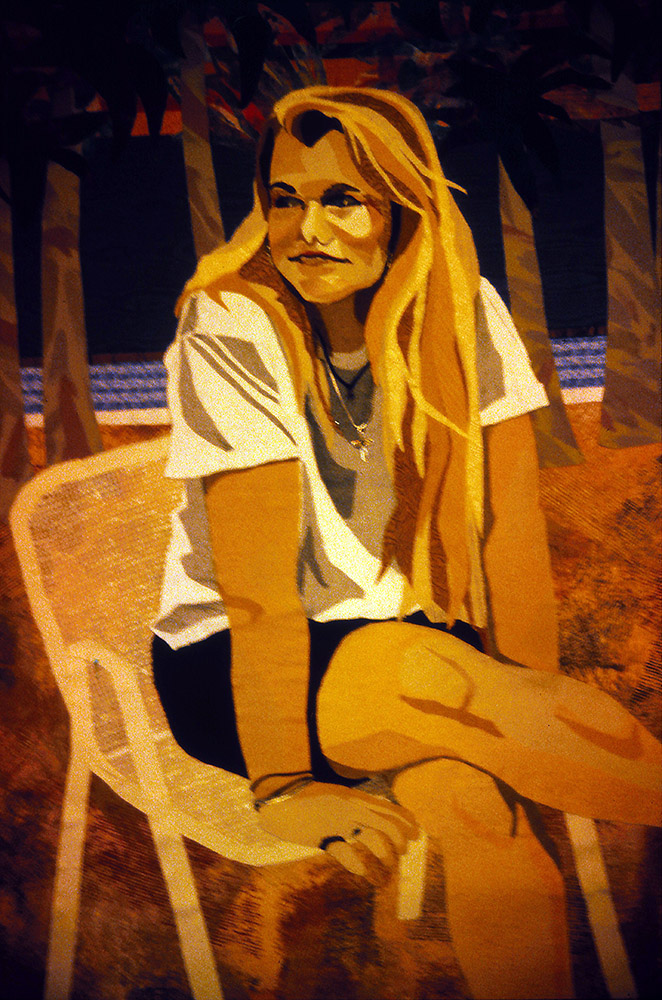
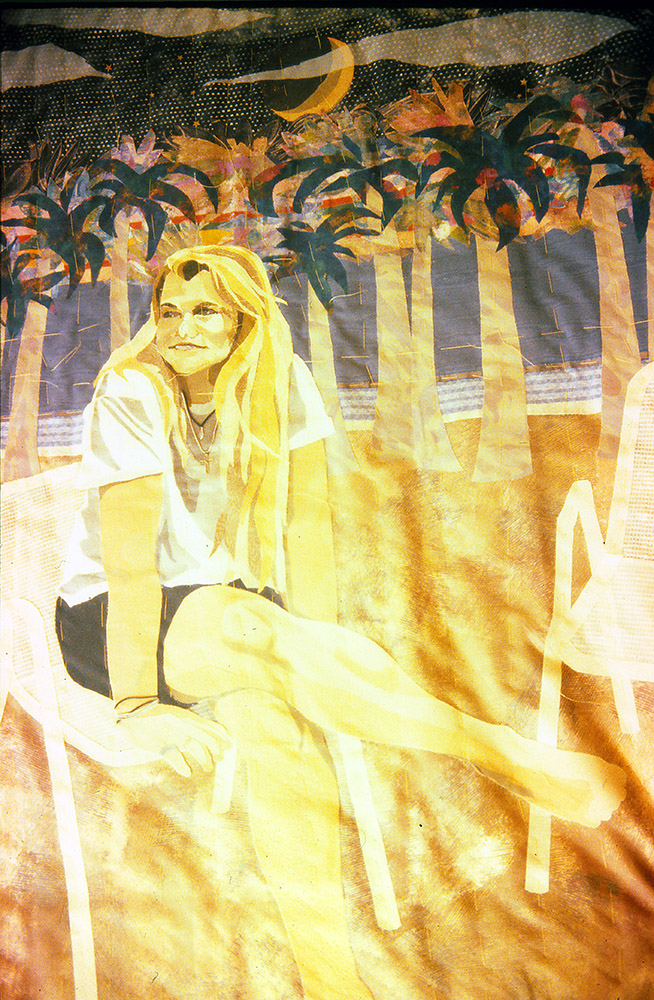
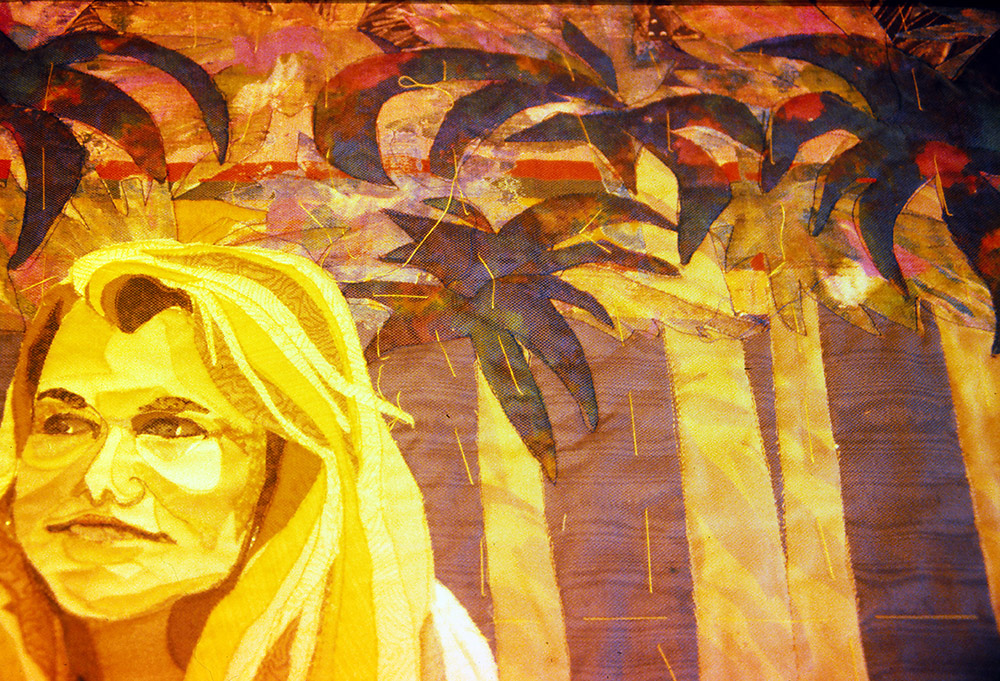
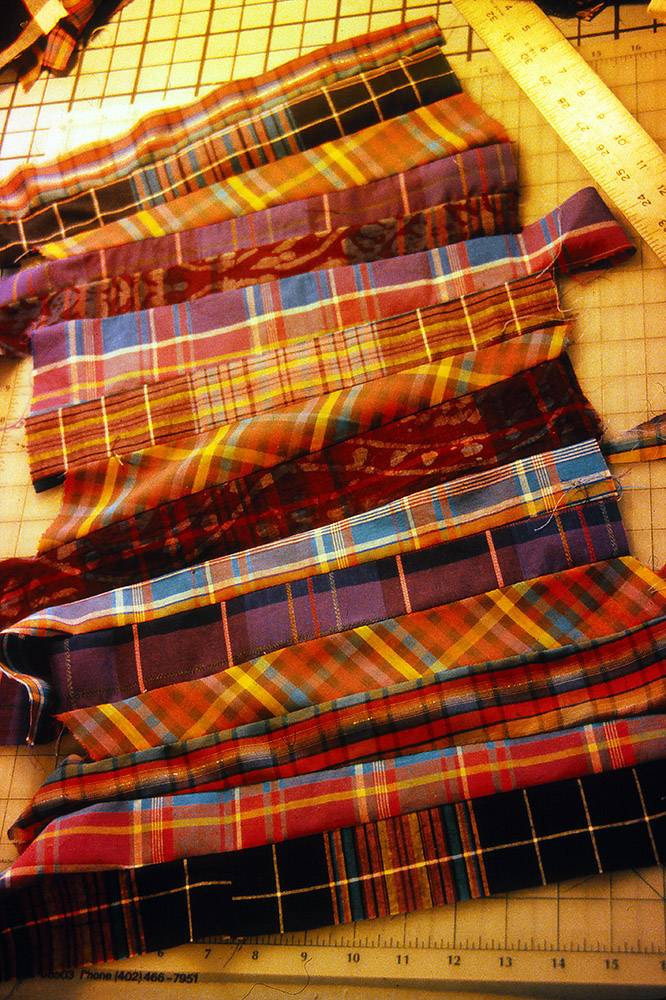
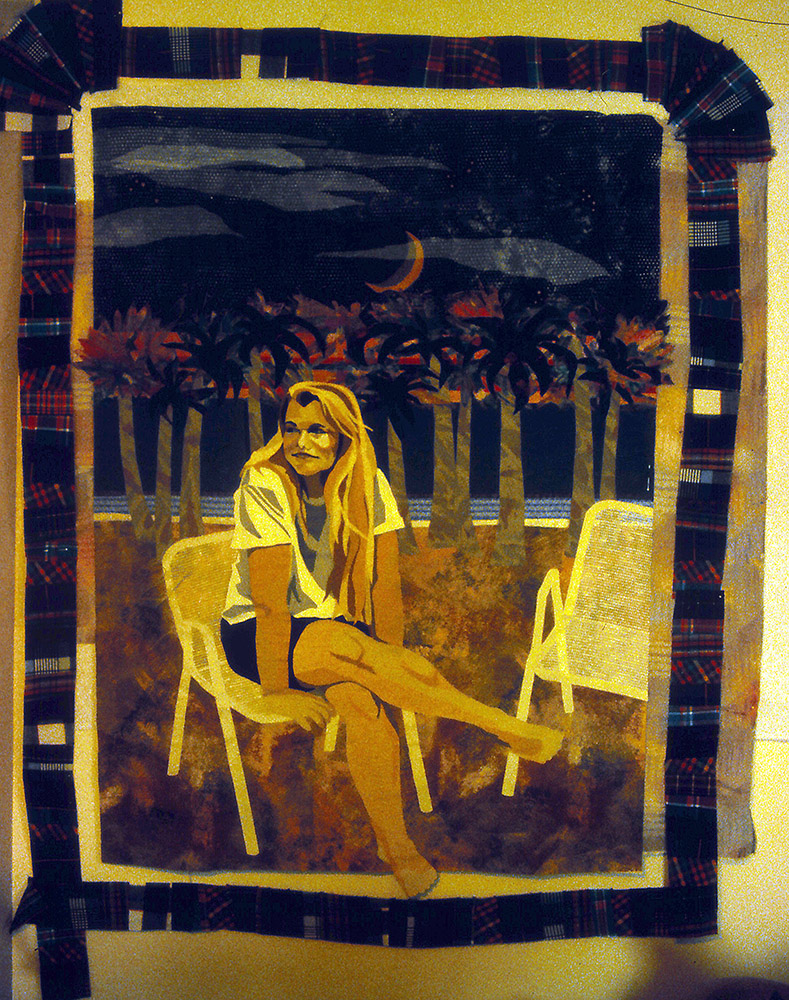
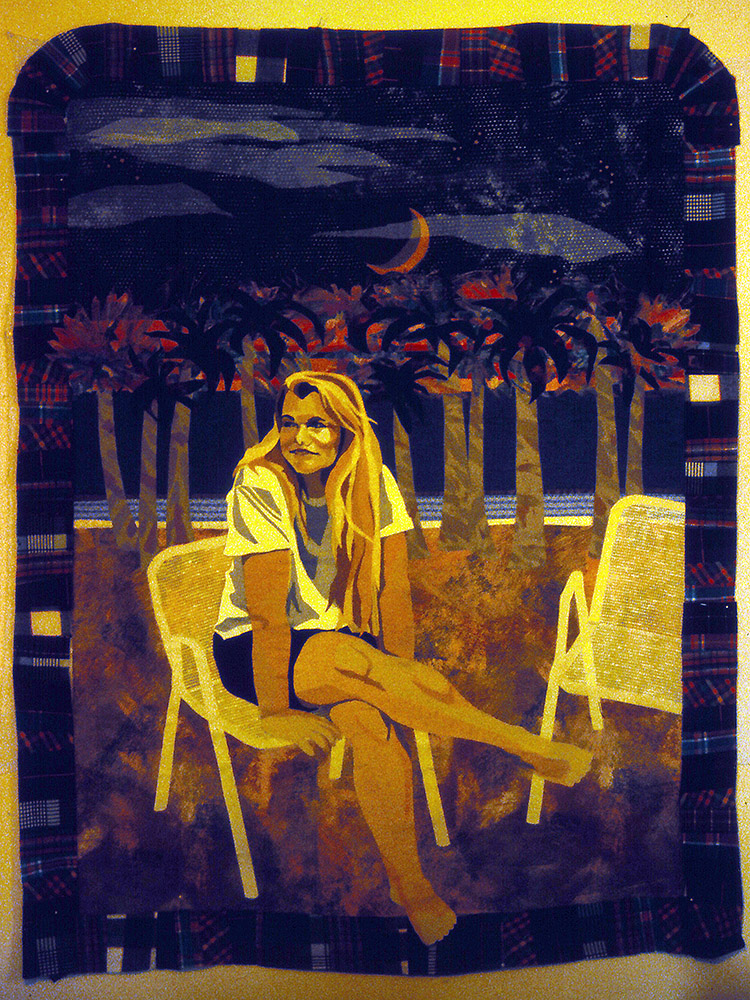

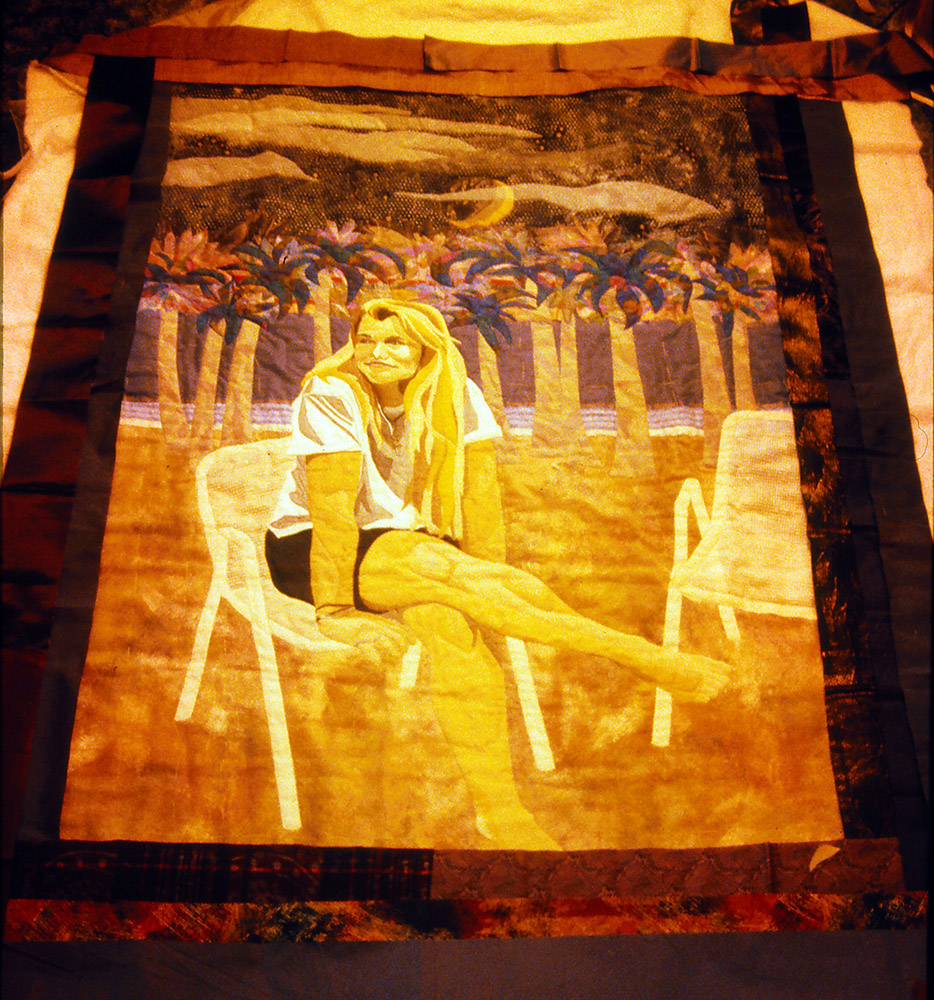

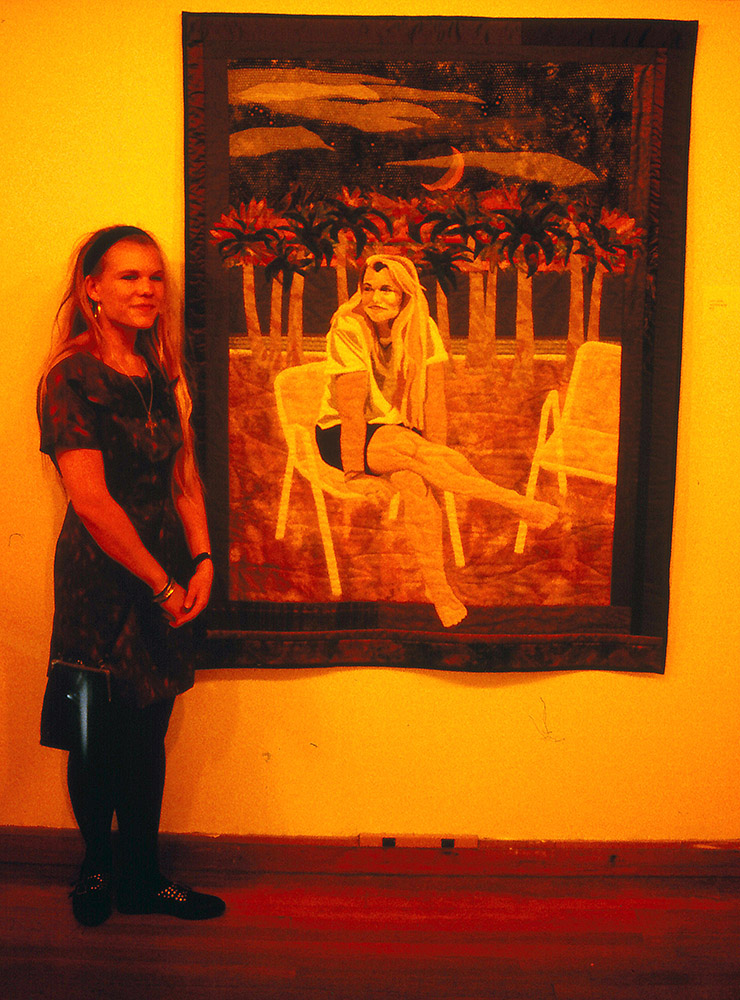
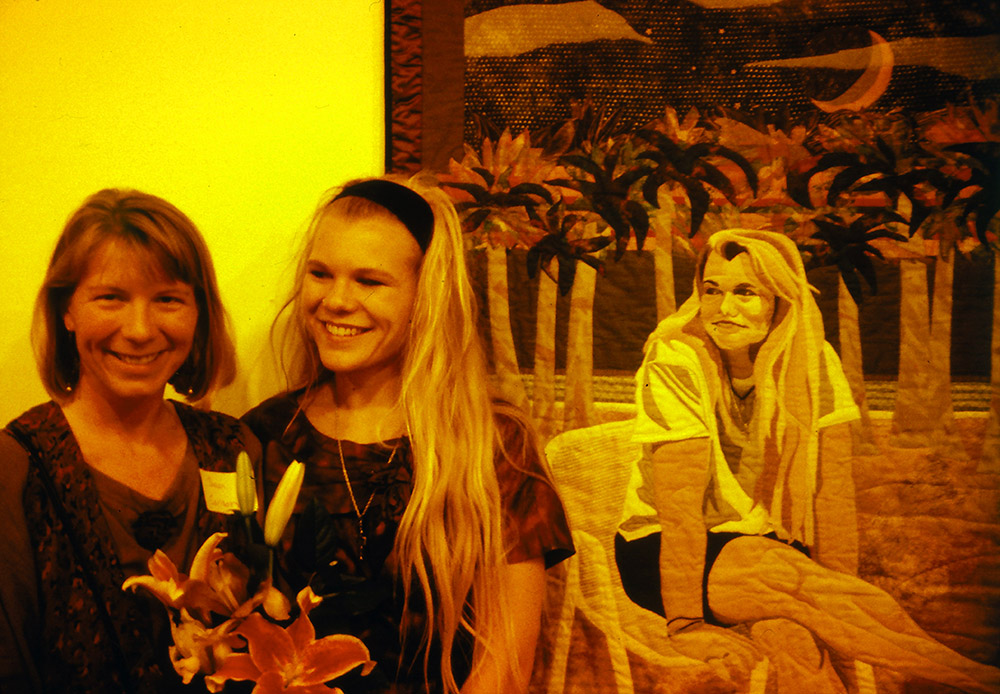
Original Post
Last Sunday I returned from two weeks of teaching. Ordinarily after a teaching jaunt the next blog would be an “On the Road” post, featuring student work and a summary of my travel. On Monday morning, however, I woke and realized I had to transition from thinking about my work and my students to thinking about family. It was the week of Thanksgiving, and we had three days to plan a menu, shop for food, clean, set the table, and then do a marathon cooking day.
I’m not complaining, I just changed my concentration for the week, and it was good. We do these sorts of things because we care about our families and want them to feel welcome when they arrive, comfortable during their visit, and satisfied when they leave.
In other words, I wasn’t thinking about my recent travel and the wonderful projects my students had worked on at Art Quilt Tahoe in Nevada and at Woodland Ridge Retreat in Wisconsin. Instead my brain was in a family space. I was in a self-reflective mood, thinking about being home and being around family.
California Dreams
I consider myself immensely lucky to have my family nearby. My parents live next door, and my one and only sibling, my sister Heidi, lives a mile and half down the road. Even our kids, who are now both in college, are relatively close by. My son Sam, is only one hour away and my niece Maia, is three hours away. I knew that for one overlapping day this week, we’d have that part of the family plus a few members of Tom’s family gathered for food and talk and games on Thanksgiving Day.
So with that in mind, I chose a different blog post for this week, one that stayed in the family mode yet still furthered a quilt-related topic, a Quilt Story of “California Dreams,” a portrait of my sister Heidi.
In the early years of my fabric collage journey, I chose friends and family members as subject matter. They were my guinea pigs as I played with fabric and glue. I’m not sure if this portrait of Heidi, was collage quilt number three or number four, but it’s dated 1991 and I know I made my first fabric collage quilt (of my father-in-law), “Dain,” in 1990 (pictured in grouping below), so “California Dreams” has to be one of the earliest ones.

Early fabric collage quilts included (below—clock-wise from upper left): Dain—1990, Snooks (me at age three)—1991, Self Portrait with Shadow—1991 (and detail), Susan P. (detail)—1990, and Surprise Me—1991.
I totally surprised myself when I found the original sketches I had made while playing with background ideas for this quilt. No doubt, somewhere in a box, there may be other sketches, original photos, possibly work-in-progress photos, but if and when I ever come across them is anyone’s guess. But we’re not going for perfection, just the story.
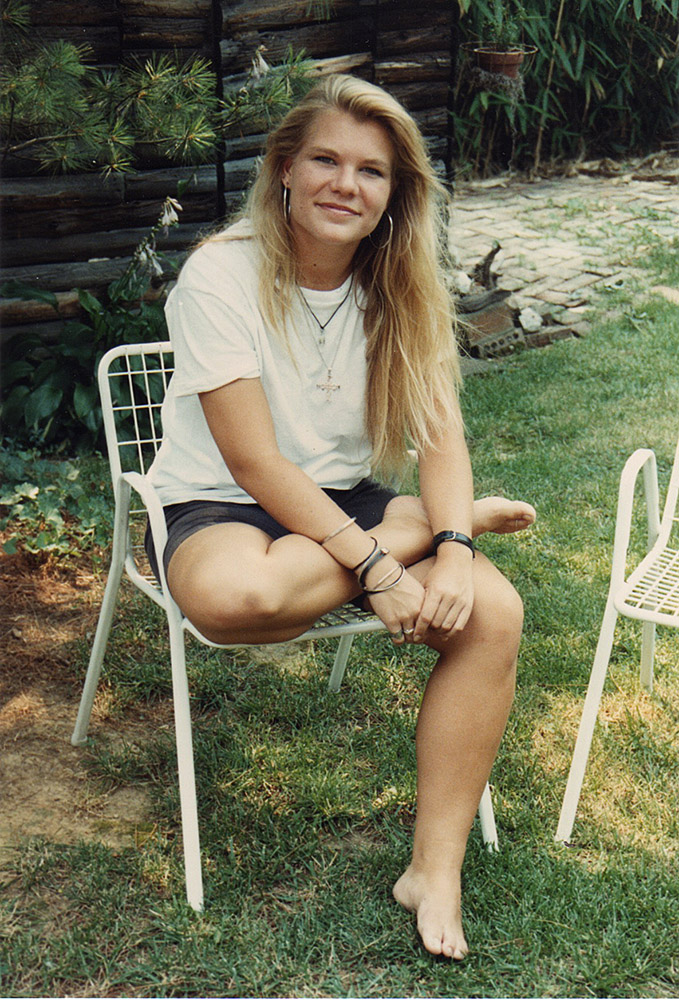
Heidi’s my little sis, six years younger than me. We grew up in Wheaton, MD, in a classic suburban neighborhood just outside Washington, DC. We have fond memories of family vacations in Chincoteague, VA—staying at the Lighthouse Inn and getting eaten by mosquitoes while chasing fireflies. We spent days spent at Assateague Island National Seashore, where the feral ponies live. There’s a photo “somewhere” of a very young me with Misty of Chincoteague and a later photo of a young Heidi with Stormy, Misty’s foal.
I relate these tidbits since it could be that those early family trips to the beach made the beach and boardwalk of Ocean City, MD, all the more appealing for Heidi and I as we reached our teenage years. Especially for Heidi. She dreamt of living at the beach—maybe even on a California beach, the ultimate destination. And eventually she made that dream come true. At the time I made the quilt “California Dreams,” Heidi was living in Longbeach, CA.
I work from photos and I had taken a good one of Heidi sitting on a wire lawn chair with a pensive look on her face (if I ever find that photo, I promise to add it as an edit to this post). The photo gave me the idea for the quilt. I relocated the chairs from my parents’ backyard to a fictional beach. You could tell it was a California beach because of the multi-hued sunset behind palm trees (something you’d certainly never find in Chincoteague, Virginia). I added a moon in a starlit sky since Heidi used to get dolled up for dance clubs as I was putting on my pajamas.
A closer look at the quilt reveals quite a variety of fabric types: silks, batiks, mesh, acetate, and decorator fabrics. Mostly stuff I had on hand or hand-me-downs from my mom’s dressmaking stash. At this point in time, I was using a spray adhesive to hold the collaged fabric shapes secured prior to quilting. There’s real jewelry couched in place, with a layer of tulle overtop the entire quilt—as a shadow quilting technique.
The backing of the quilt is actually a machine pieced abstraction of the Road to California quilt block. A tracing of Heidi’s hand print with her signature is hand-appliqued below the quilt label.
What is most noticeable, I believe, in this and other early quilts, is the lack of printed designs in the fabric—so entirely different from how I work now. The figure is composed almost entirely of solid fabrics. Solids! Exactly what I tell my students not to bring to class. Variation of skin tone, highlights, and shadows are achieved with layers of sheer fabrics—mostly tulles but also some chiffon—but all very subtle. I’ve lost some of that subtlety as I’ve aged.
Would I make this quilt differently now? Most definitely. Would I re-do it? Never. It represents a moment in time—of my sister and of me. Heidi dreamt of living at the beach and in California—she did both. I was following my artistic dream of working with fabric and seeing where it took me. Now, 26 years later, I can see that it has taken me far.
Having just returned from teaching another 32 students, looking at this quilt has reinforced some of the thoughts I had in those classes. Students are concerned about “doing it right”—and even I can get caught up in that mindset. But I have to remind myself that “right” is open to interpretation. As I teach the technique of fabric collage I attempt to direct each student in their own journey. Each one of us has our own unique way of seeing the world and interpreting what we see. My own art quilts have changed much over the years. So it will be, and should be, a similar experience for my students. We’re all working from different starting places. My students need to learn and grow just as I have—learning from a teacher such as me when they can—but ultimately making their own journey.
It may be they discover a completely new way of using fabric to create art. Or it may be that despite our very different journeys—like my little sister and me—we wind up in the same place in the end.
Next week: a few of those latest student journeys.
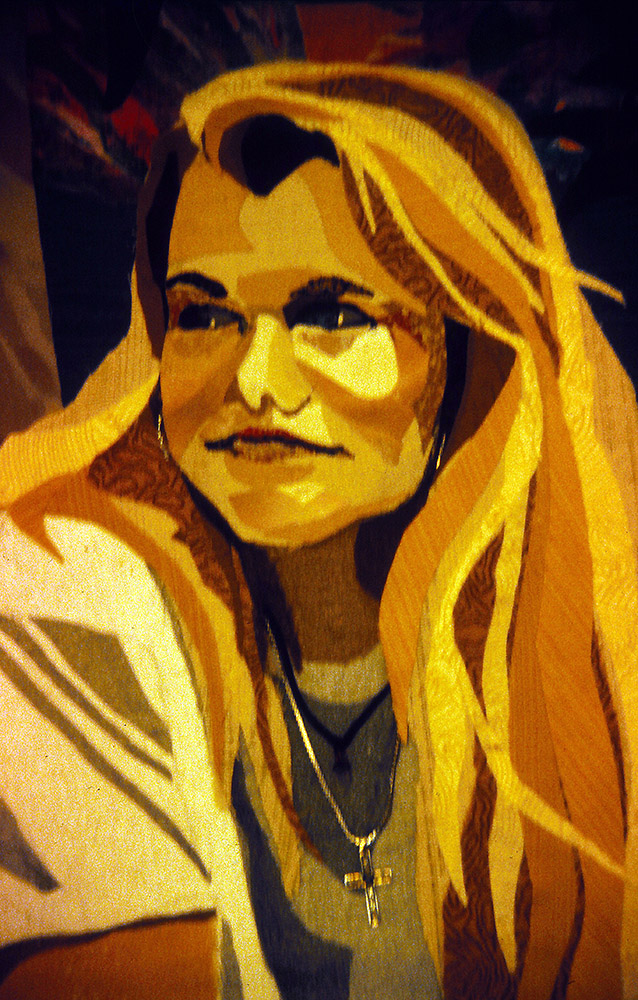







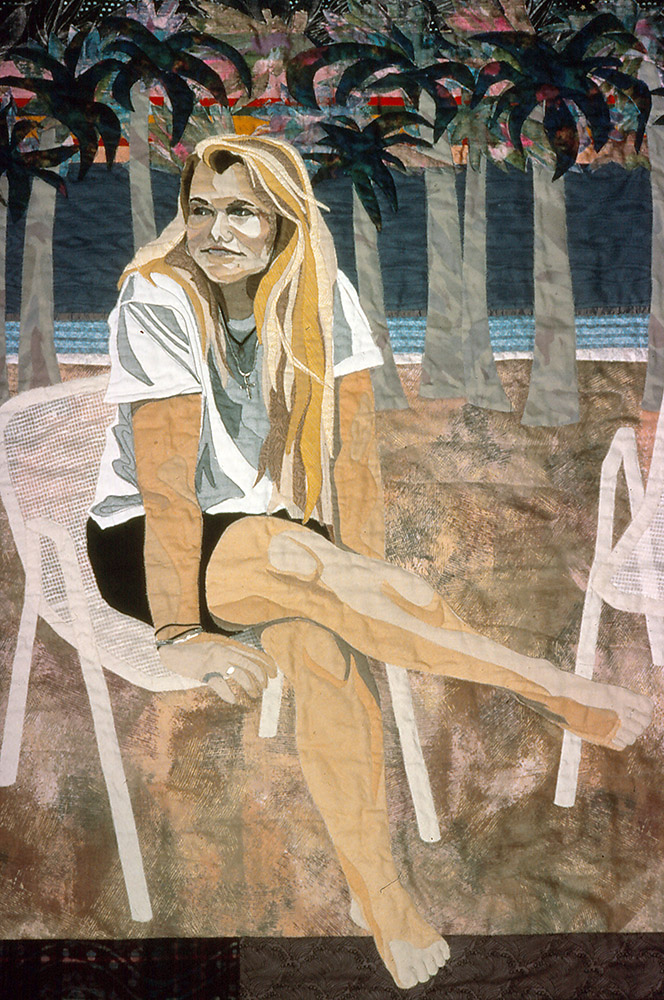
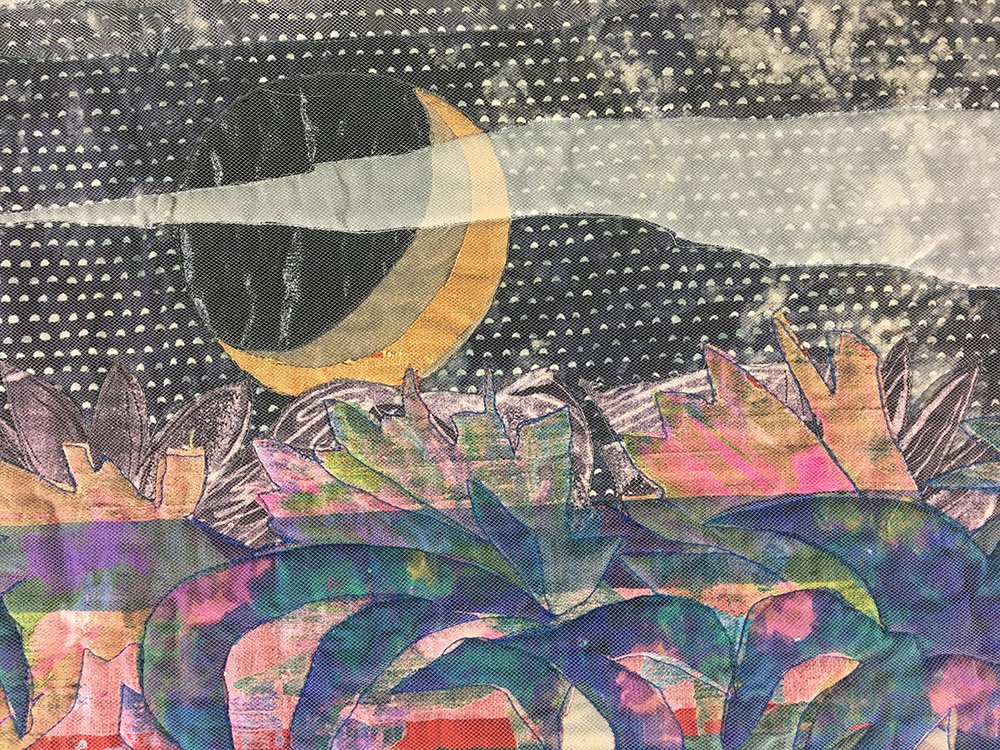

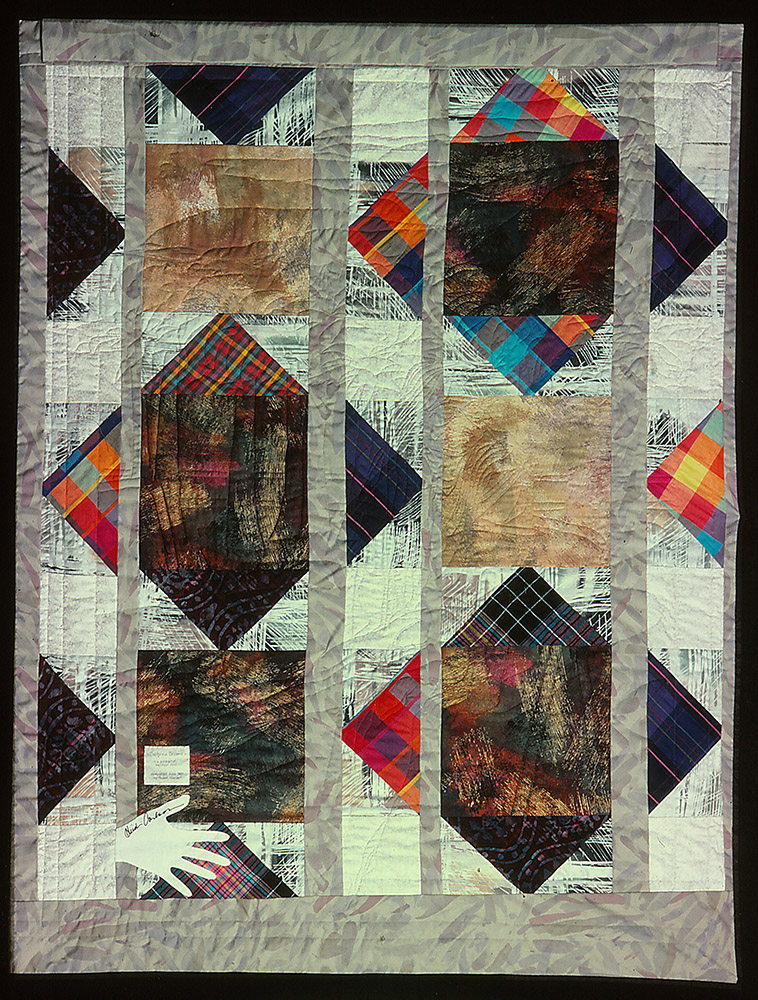
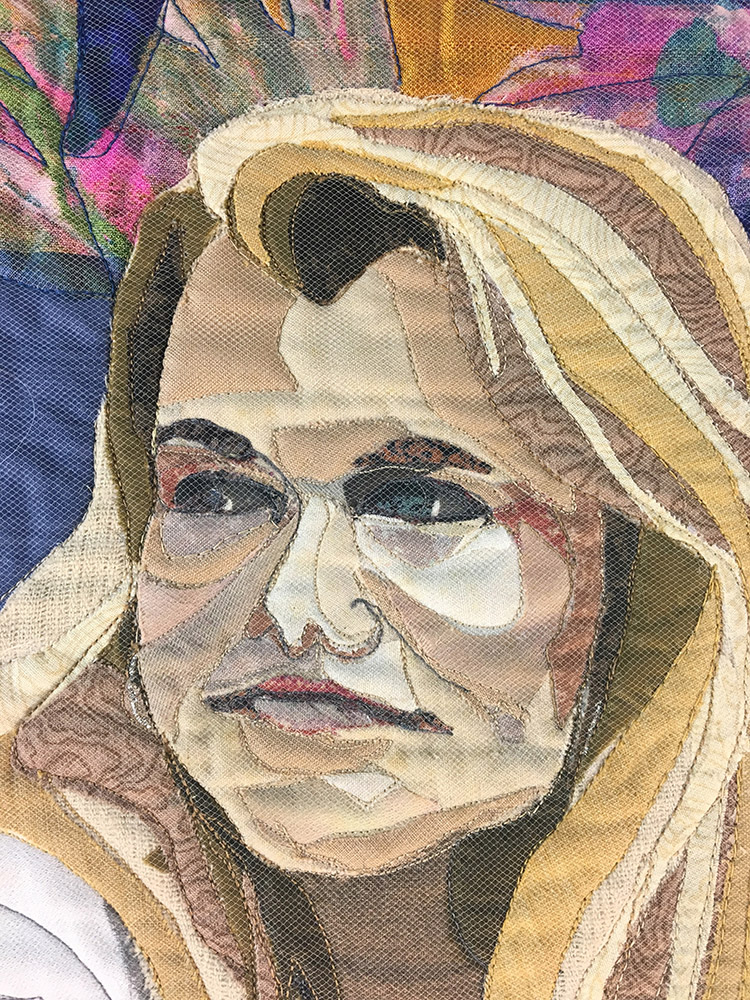
Dear Susan:
I love when you post your works! Thank you for being such an inspiration to a newbie like me. I always look in wonder at your creations, simply gorgeous. These are wonderful!
Thankyou, it is lovely to see the progress of a piece especially as you are showing and explaining the change in process/ fabric choices over the years. I really like that you say ‘ right’ is open to interpretation, as a student and teacher this is important- getting bogged down trying to do it right can be very demoralising for everyone!